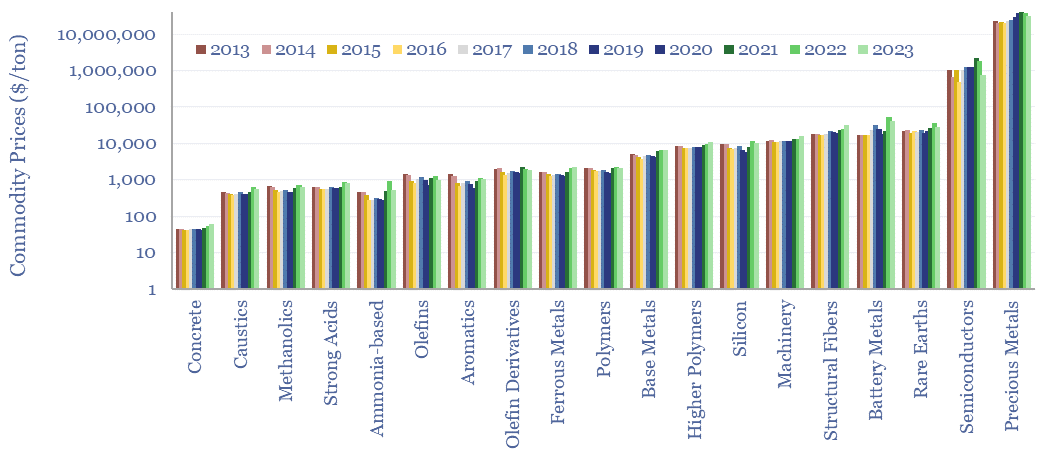
…prices, Electric Motor and Generator prices, Electrical Transformer prices, Epoxide prices, Ethanol prices, Ethylene prices, Ethylene Oxide prices, EVA prices, Formaldehyde prices, Glass Fiber prices, Gold prices, Graphite Anode prices,…
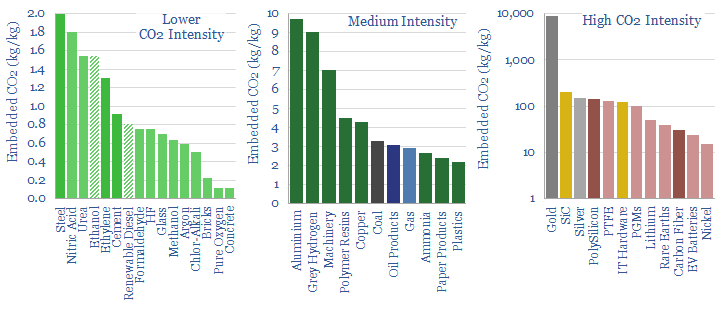
…gas gathering, gas distribution, ethanol plants. Other data-files on our website have aimed to tabulate the CO2 intensity of other value chains, but due to quirks of those value chains,…
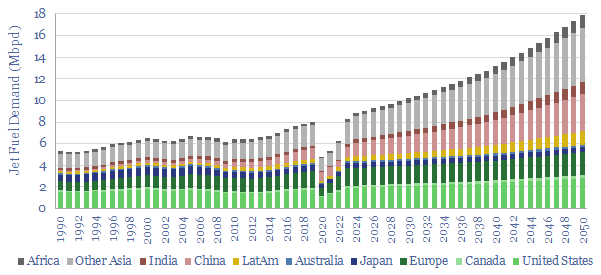
…Wh/kg, while batteries today are 250 Wh/kg and will at best reach 1,250 Wh/kg (data here). We have evaluated sustainable aviation fuels, such as renewable jet, biogas-to-liquids, bio-ethanol-to-jet and e-fuels,…
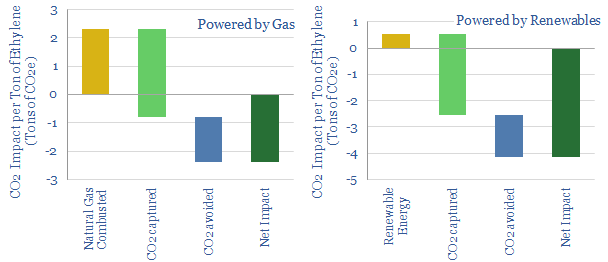
…electro-reducing CO2 into C2s, such as ethylene, which is the chemical precursor to polyethylene [1]. The process has a Faradaic efficiency of 80%. It yields two-thirds ethylene, one-third ethanol, and…
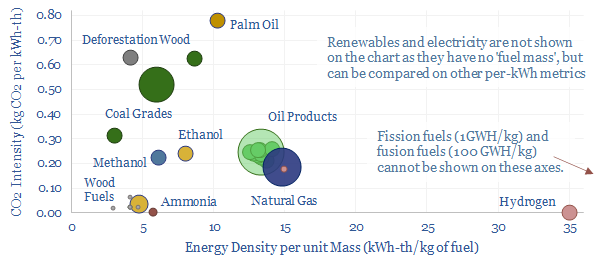
…bn bbls), boe (boe, kboe, Mboe, bn boe), kilograms and tons; for ethane, methanol, ethanol, propane, butane, octane, gasoline, jet fuel, diesel, fuel oil and the ‘blended average oil barrel’;…
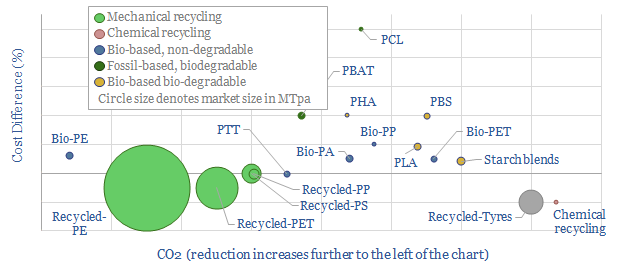
…from biomass is likely c30% lower in CO2 than conventional plastics, but around 2x more costly (research note here). The economics of the ethanol-to-ethylene chemical pathway are modelled here. Biomass-derived…
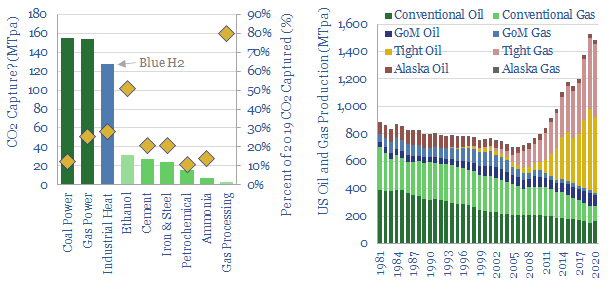
…market sizing looks industry-by-industry, to break down possible capture volumes. We discuss each industry in turn – coal power, gas power, ethanol, steel, cement, et al., – on pages 9-12….
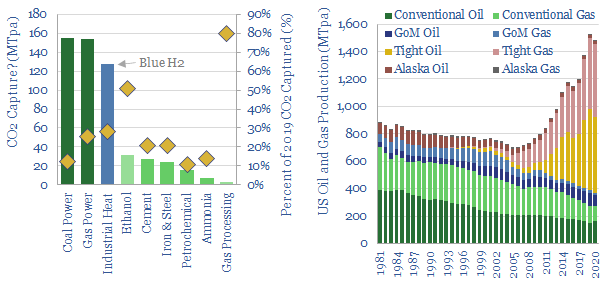
…industrial and power-sector emissions could be captured, across coal-power, gas-power, ethanol, steel, cement, chemicals and smaller manufacturing. To put this in perspective, we also quantified how many million tons of…
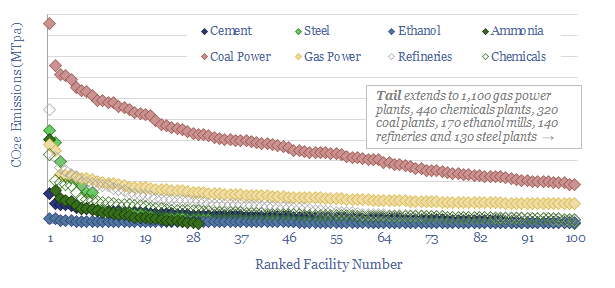
…facility, to understand whether CCS can ‘take the edge off’? Our conclusions are that many coal plants may be ‘too large’ to decarbonize with CCS, whereas many ethanol plants are…
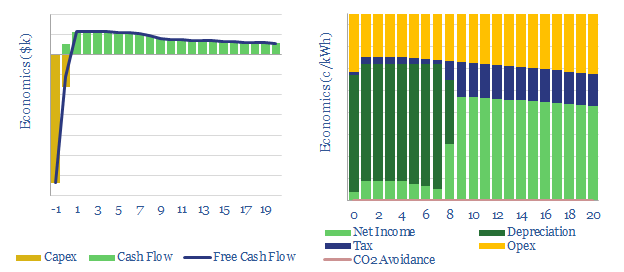
…sources. For example propane boils at -42°C, methanol boils at 65°C and ethanol at 78°C. Past systems have historically also used fluorocarbons. Organic Rankine Cycles can be useful for waste…









